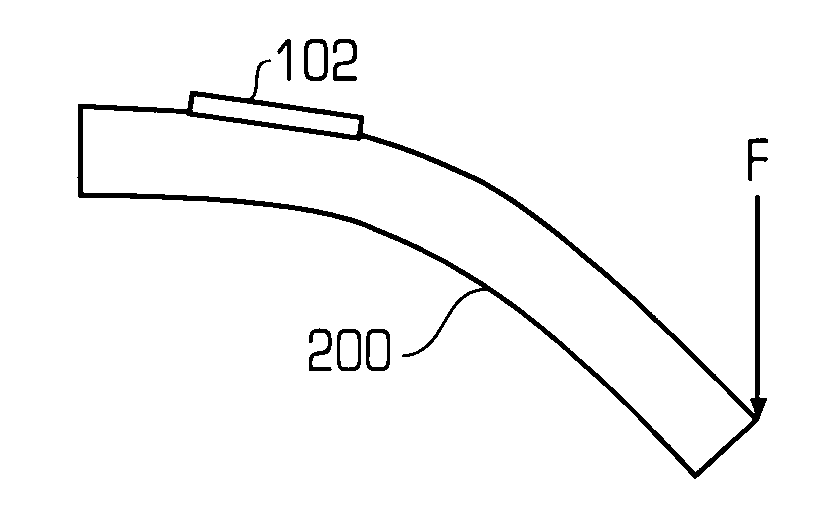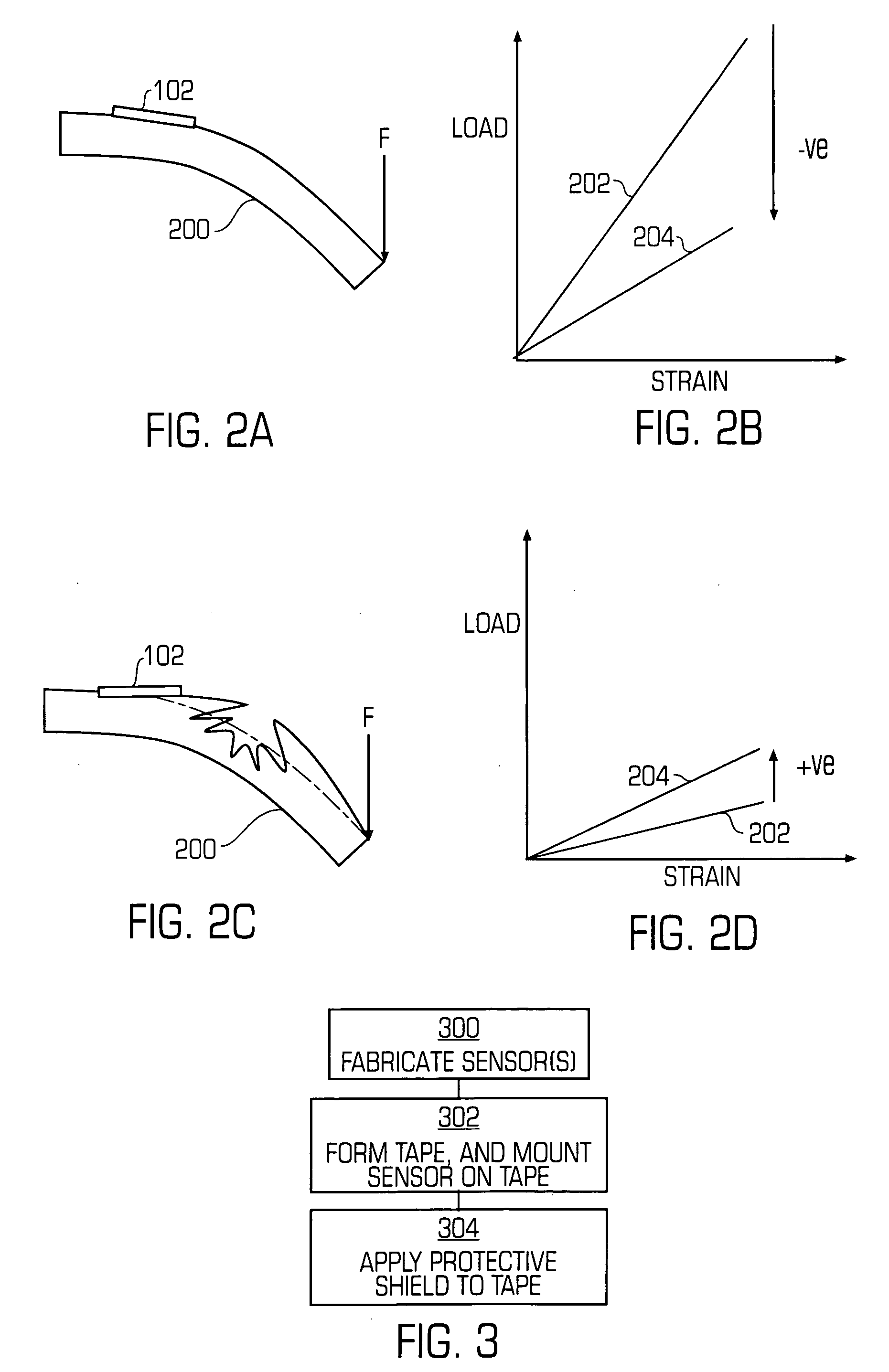Miniature sensor
- Summary
- Abstract
- Description
- Claims
- Application Information
AI Technical Summary
Problems solved by technology
Method used
Image
Examples
Embodiment Construction
[0020] In one sense, the invention relates to a low-dimensional strain sensor that can detect multiple modes of deformation. The configuration and operation of this strain sensor is shown conceptually in FIGS. 1A-1C. Here, MEMS techniques are employed to fabricate a number of piezoresistors 100 directly into a toroidal, or generally ring-shaped, substrate 102. By employing MEMS techniques, the toroidal substrate 102 can be made small and flat, yielding a compact and lightweight sensor.
[0021] In addition, the use of MEMS fabrication techniques allows for the fabrication of low-profile substrates 102 that have piezoresistors 100 that are fabricated directly into or upon the upper surface 106 of the substrate 102 (as can be seen in the side view of FIG. 1A), without protruding upward from the upper surface 106. In this manner, the piezoresistors 100 are located off the substrate's 102 neutral axis of bending, allowing the piezoresistors 100 to differentiate between multiple deformatio...
PUM
 Login to View More
Login to View More Abstract
Description
Claims
Application Information
 Login to View More
Login to View More - R&D
- Intellectual Property
- Life Sciences
- Materials
- Tech Scout
- Unparalleled Data Quality
- Higher Quality Content
- 60% Fewer Hallucinations
Browse by: Latest US Patents, China's latest patents, Technical Efficacy Thesaurus, Application Domain, Technology Topic, Popular Technical Reports.
© 2025 PatSnap. All rights reserved.Legal|Privacy policy|Modern Slavery Act Transparency Statement|Sitemap|About US| Contact US: help@patsnap.com



